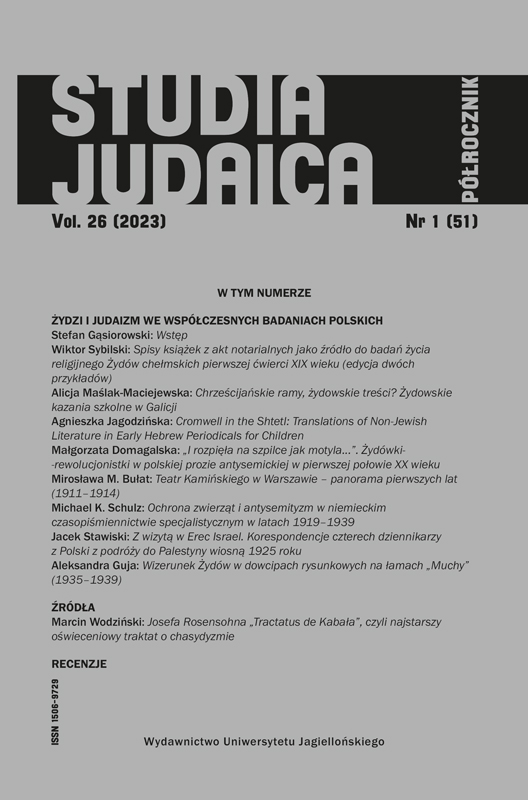I rozpięła na szpilce jak motyla… Żydówki-rewolucjonistki w polskiej prozie antysemickiej w pierwszej połowie XX wieku
“And She Stretched Him on a Pin Like a Butterfly...”: Revolutionary Jewish Women in Polish Antisemitic Prose of the First Half of the Twentieth Century
Author(s): Małgorzata DomagalskaSubject(s): History, Language and Literature Studies, Jewish studies, Studies of Literature, Jewish Thought and Philosophy, History of Judaism, Historical Linguistics
Published by: Wydawnictwo Uniwersytetu Jagiellońskiego
Keywords: revolutionary Jewish women; antisemitism; popular novel; conspiracy theory
Summary/Abstract: After the revolution of 1905, revolutionary Jewish women began to appear among the heroines typical of the antisemitic novels of the nineteenth century. This type of female protagonist can be found in the novels written by Józef Weyssenhoff (Hetmani [The Hetmans]), Rev. Jan Gnatowski (Zły czar [Bad Spell]), and then in the 1930s in the novels by Roman Dmowski (Dziedzictwo [The Heritage]) and Jędrzej Giertych (Zamach [The Coup]). In these narratives, Poland is presented as a victim of manipulation by Jews, Germans, and in the case of the Bad Spell by Jewish Bolsheviks. In these stories, female Jewish revolutionaries implement their secret policies using their strong erotic influence to seduce Polish activists. Demonism and evil, as well as the misogynistic attitude of the fin de siècle era were employed to create their portraits. In these female protagonists, one can detect echoes of features associated with such Jewish heroines as Salome, Judith, and Herodias whose portraits were typical of the art and literature of the epoch.
Journal: Studia Judaica
- Issue Year: 26/2023
- Issue No: 51
- Page Range: 95-115
- Page Count: 21
- Language: Polish

